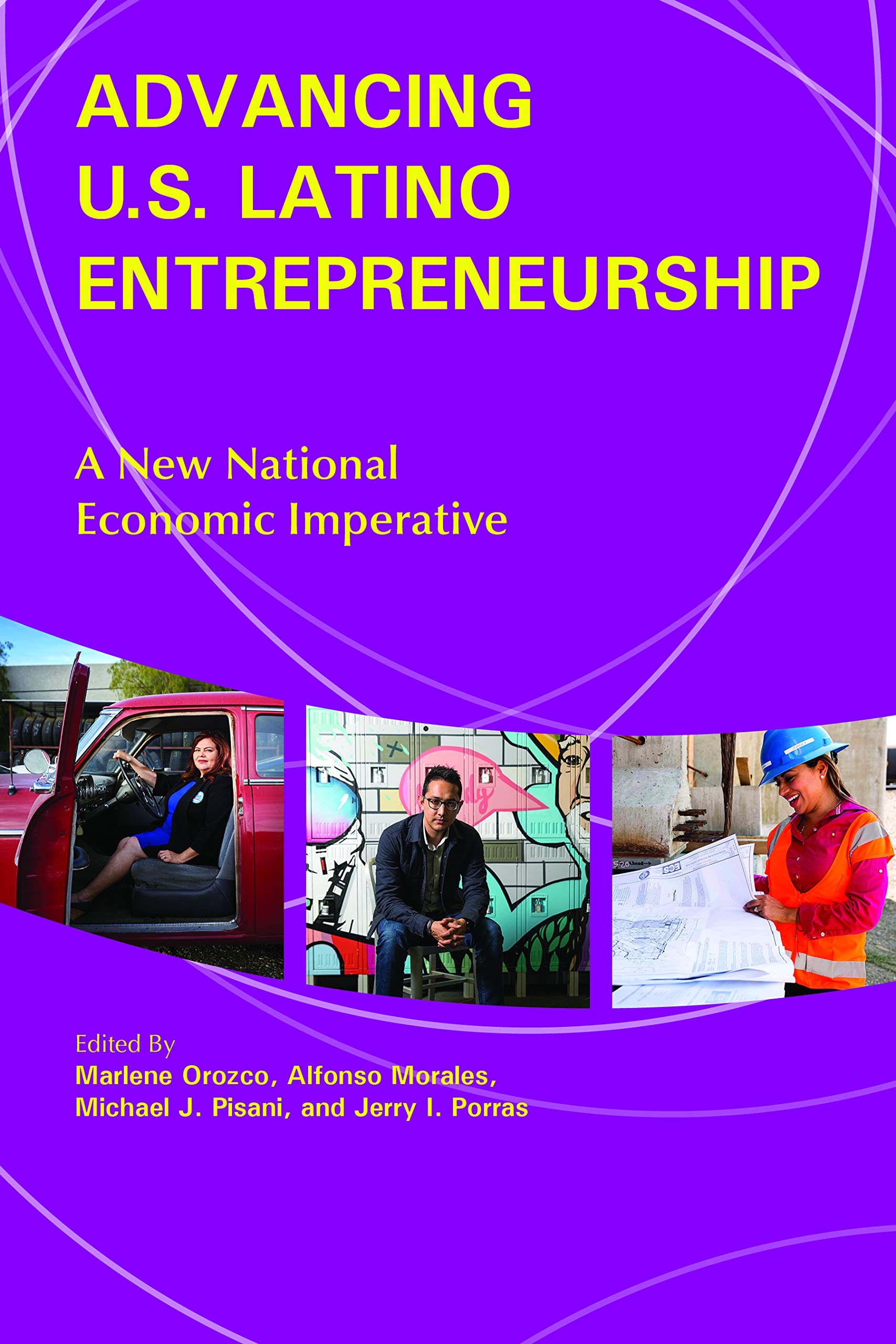Advancing U.S. Latino Entrepreneurship: A New National Economic Imperative

This edited book provides a holistic approach to the study of U.S. Latino entrepreneurship using a historical perspective and multiple data sources. It contains 14 chapters, along with an introduction and a conclusion. After presenting the Latino entrepreneurship framework, the editors point out that entrepreneurship involves “multiple economic processes (accounting, supply chain management, logistic, etc.)” (p. 7) which for ethnic minority and “disadvantaged” entrepreneurs include constraints created by other players in the economy. The ethnic entrepreneur must harness other powerful systems, such as kinship, co-ethnicity, politics, or religion, as resources” to be able to compete in their respective sectors of the economy (p. 7).
Cadava in “Entrepreneurship from the Beginning: Latino Business and Commerce since the Sixteenth Century” presents a historical perspective on how Latino businesses have been operating in the United States for more than 500 years. Pisani and Perez in “Latino Businesses and Commerce: A Contemporary View” introduce a two-by-two table with four quadrants based on primary customers (Hispanic and non-Hispanic) and products (Hispanic and non-Hispanic). The quadrants are labelled “highly segmented” (quadrant 1), “product integrated” (quadrant 2), “market integrated” (quadrant 3), and “highly integrated” (quadrant 4) (p.47).
In “The Economic Contributions of Latino Entrepreneurs,” Fairlie, Valdez, and Agius Vallejo, hold that “historically Latino rates of business ownership have lagged behind all other immigrant groups” (p. 59). Their conclusion is that “rates of Latino ownership and income are on the rise, associated with greater economic incorporation and mobility” (p. 72).
Orozco and Perez, in “The State of Latino Entrepreneurship: SLEI Research and Findings,” point out that “the rate at which new Latino firms are being created is outpacing Latino population growth… [and] that Latinos are starting businesses at a higher rate relative to all other demographic groups… [A]s most recent survey data reveal[,]…about 3 percent of LOBs [Latino-owned businesses] are generating at least $1 million or more in annual revenue per year” (p. 89).
In “Latino Farm Entrepreneurship in Rural America,” Robles, Morales, and Pisani note that “The number of Latino farmers is on the rise…[with] impressive increases in the number of Hispanic principal farm operators, averaging 32.2 percent per census from 1987 through 2012” (p. 117).
Ledesma and Cruz in “Shaping Success: Exploring the Evolution of Latino Businesses in Three Major U.S. Counties” focus on Latino businesses located in Los Angeles County, California, Harris County, Texas, and Miami-Dade County, Florida, counties with the highest concentration of Latinos. Their key findings are that “all three counties had professional business services as their largest business industry classification,” and “the number of businesses with zero employees grew across all the three counties and among all of the Latin-origin groups” (p. 159).
In “Mexican American Founder Narratives at High-Growth Firms on the South Texas-Mexican Border” Sargent and Matthews seek to increase the collective understanding of high growth firms (HGFs) in general and Latino HGFs operating on the U.S.-Mexican border. They carefully identify and describe five important characteristics that firms need in order to become HGFs: 1) human capital of the founder, 2) strategy, 3) human resource management, 4) innovation, and 5) capabilities.
Echeverri-Caroll and Mora in “Social Network Utilization among Latino-Owned Businesses” test the enclave hypothesis and find that LOBs located in counties with high percentages of Latinos have a greater likelihood of generating positive profits. Another finding suggests that Latina entrepreneurs may be disadvantaged relative to Latino men in terms of accessing formal networks to enhance their business success.
The next two chapters focus on the impact of acculturation and language on firm performance. In Chapter 10, Pisani and Guzman conclude that “as Latinos acculturate, more LOBs will be created” (p. 249). In Chapter 11, Dávila, Pisani, and Miranda conclude that “bilingual LOBs as compared to English-dominant LOBs perform well in both revenue size and profitability…” (p. 277).
Zambrana, Lara, Stotzer and Stewart. in Chapter 12, “How Can Entrepreneurship Serve as a Pathway to Reduce Income Inequality among Hispanic Women?,” argue that “self-employment and entrepreneurship represent important opportunities for native-born…Latinos to open pathways out of poverty, increase income equality, and accelerate upward social mobility if institutional barriers are decreased and financial and social capital resources are increased” (p. 307).
In “SLEI-Education Scaling Program: A Business Program of ‘National Economic Imperative’” Orozco focuses on the growth rates of LOBs and presents findings from qualitative data analyses to highlight successful firms and the ways by which business owners manage growth. In the final chapter, Mantilla focuses on G.R.E.A.T. Gacela Theory and explores capital and ecosystem support dimensions of firms that may facilitate rapid growth for those with high potential. She provides several examples by emphasizing growth, refinancing, expansion, acquisition, and transitioning to the next generation.
This book makes an important contribution the study of Latino entrepreneurship. One important correction that is needed has to do with the use of nonethnic and ethnic entrepreneurs labels. We should all be reminded that all entrepreneurs are ethnic, and that there are dominant group and minority group entrepreneurs, the latter being ethnic minority entrepreneurs. Aside from that, it is recommended to academicians, undergraduate and graduate students, policy makers, and business organizations interested in understanding the development of Latino-owned businesses.
